Acceleration Funds for 2021-2023
Project 1: Artificial Intelligence Based Spontaneous Preterm Birth Prediction Using Ultrasound and EMR Data Principal
Abstract
Global rates of preterm birth (PTB) remain astonishingly high, accounting for the majority of infant deaths. Our multidisciplinary team seeks to understand which physiological factors support a healthy pregnancy by leveraging machine learning to test hypotheses about the mechanical environment of pregnancy. Currently, risk assessment and management of spontaneous PTB rely heavily on sonographer assessment of cervical length (CL), an incomplete measure of cervical structural health. Although routine CL screening has identified some high-risk patients, it is not universally adopted because predictions remain unreliable. It is known that age, race, and surgical history are also associated with spontaneous PTB. Our past computational biomechanical models show the cervical function depends on its volume and shape more than cervical length alone. Based on this premise, our team of engineers, radiologists, biostatisticians, and clinicians propose to collect electronic medical record (EMR) data and clinical cervical ultrasound (US) images using an IRB-approved protocol and to use machine learning to develop and optimize PTB prediction models. Using the US images, we will train a novel deep-learning algorithm to extract cervical size and shape automatically (Aim 1). Then we will combine these raw images and cervical structural features with EMR data to build a high-dimensional, patient-specific PTB prediction model (Aim 2). In future work, these data will be leveraged in biomechanical simulations to gain a mechanistic understanding of a healthy, term delivery.
Principal Investigators

Kristin Myers is an associate professor of mechanical engineering at Columbia University. She received a BS in mechanical engineering in 2002 from the University of Michigan and an MS in 2005 and a Ph.D. in 2008 in mechanical engineering from Massachusetts Institute of Technology (MIT). Her research focuses on mechanical stresses on female reproductive system during pregnancy, specifically pre-term birth. She joined the faculty of Columbia Engineering in 2010 and in 2017 received the ASME Y.C. Fung Young Investigators Award. In 2019, Myers won the Presidential Early Career Award (PECASE), the highest honor the U.S. government gives to outstanding young scientists and engineers.
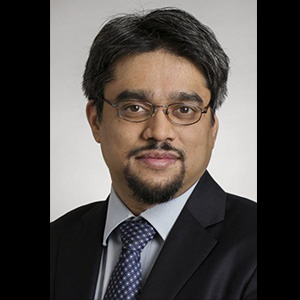
Sachin Jambawalikar is a faculty member in Radiology and Biomedical Engineering and Chief Medical Physicist in Department of Radiology at CUMC/NYP. He holds a BEng in biomedical engineering from the University of Mumbai and an MS and Ph.D. in biomedical engineering from Stony Brook University. His background and training have been in MR physics, machine learning and medical image feature analysis. As an image analysis scientist, Jambawalikar is interested in developing noninvasive post processing and image analysis techniques for disease detection, and evaluation of disease therapy outcomes. His long-term research goals are to evaluate the use of multi-parametric MR feature analysis techniques and develop classification and regression machine learning models for disease and outcome prediction.
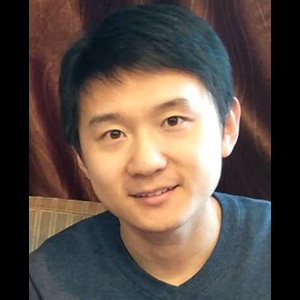
Qi Yan is an assistant professor in the Department of Obstetrics & Gynecology at the Columbia University Irving Medical Center. He holds a BS in biomedical engineering from Beijing Institute of Technology, MS in biomedical engineering and an MS and Ph.D. in biostatistics from the University of Alabama at Birmingham. His research interests lie broadly in statistical genetics and bioinformatics. In particular, he is focused on the application of cutting-edge technologies (e.g., sequencing technology) for analysis of high-throughput genetic and genomic data, and development of statistical and computational methods.
Project 2: Causal Data Science: Towards an Accelerated Process of Cancer Translational Research
Abstract
The broad field of cancer research focuses on understanding the mechanisms underlying the different types of cancer with the goal of improving diagnosis, better predicting the effect of new treatments, and finding new targets for cancer therapies. The field of causal inference focuses on developing algorithms and tools to allow data scientists to infer cause and effect relations from a combination of heterogeneous datasets and partial understanding of a complex system. Despite all the progress achieved so far, these fields evolved independently, with virtually no interaction between them. In this project, we will explore the opportunity to combine causal inference methods to solve problems in cancer research. Specifically, we will investigate the problem of extrapolating findings across different conditions and species in cancer research. On the biological side, Dr. Rustgi investigates how to design model systems to get insights about specific types of cancer and then extrapolate such findings to human settings. On the causal side, Dr. Bareinboim investigates mathematical and computational machinery to understand the conditions under which extrapolation of empirical findings across settings can be made while preserving the validity of such claims. Those are two highly synergistic activities that will help us realize the goal of accelerating translational cancer research in a principled and systematic way. In this project, we will combine the expertise of Dr. Rustgi's lab on developing model systems for gastrointestinal cancer research with the expertise of Dr. Bareinboim's lab on Causal Artificial Intelligence to develop a general framework for accelerating translational cancer research. Specifically, based on the computational modern language of causation, we will formally encode substantive knowledge on factors involved in specific gastrointestinal cancers, and we will use causal inference techniques to study whether (and how) experimental findings can be extrapolated from experimental organism to humans.
Principal Investigators
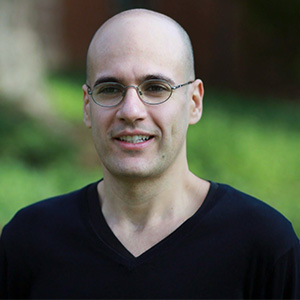
Elias Bareinboim is an associate professor in the Department of Computer Science and the director of the Causal Artificial Intelligence (CausalAI) Laboratory at Columbia University. His research focuses on causal and counterfactual inference and their applications to data-driven fields in the health and social sciences as well as artificial intelligence and machine learning. His work was the first to propose a general solution to the problem of “data-fusion,” providing practical methods for combining datasets generated under different experimental conditions and plagued with various biases. More recently, Bareinboim has been exploring the intersection of causal inference with decision-making (including reinforcement learning) and explainability (including fairness analysis). Before joining Columbia, he was an assistant professor at Purdue University and received his Ph.D. in Computer Science from the University of California, Los Angeles. Bareinboim was named one of “AI’s 10 to Watch” by IEEE, and is a recipient of an NSF CAREER Award, the Dan David Prize Scholarship, the 2014 AAAI Outstanding Paper Award, and the 2019 UAI Best Paper Award.
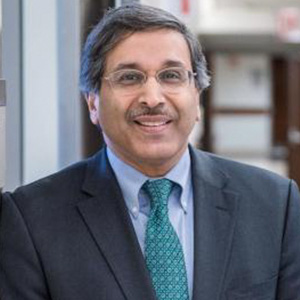
Anil K. Rustgi is the Director of the Herbert Irving Comprehensive Cancer Center at NewYork-Presbyterian/Columbia University Irving Medical Center. Dr. Rustgi is a world-renowned leader in the field of gastrointestinal oncology. His interdisciplinary research focuses on tumor initiation, the tumor microenvironment and tumor metastasis in the context of gastrointestinal cancers, including cancer of the esophagus, pancreas, and colon. Dr. Rustgi's lab works to translate their discoveries into improving molecular diagnostics and finding new experimental therapeutics for patients, and is funded through several grants including an NCI P01 (program project on esophageal cancer), an NCI U54 on Barrett's esophagus, two NIH R01 grants (for pancreatic cancer and colon cancer) and an American Cancer Society Research Professorship. He has more than 300 publications and his work has appeared in high-impact journals such as Nature, Nature Genetics, Nature Medicine, Cancer Cell, Genes and Development, Gastroenterology, Journal of Clinical Investigation, PNAS and New England Journal of Medicine. He has been elected to the American Society of Clinical Investigation and the Association of American Physicians and is a Fellow of the American Association for the Advancement of Science. Previously, he was president of the American Gastroenterological Association (17,000 members), editor-in-chief of Gastroenterology, and president of the International Society of Gastroenterological Carcinogenesis. Dr. Rustgi will serve as president of the American Pancreatic Association. He has been recognized for his contributions with numerous awards, including the AGA Julius Friedenwald Lifetime Achievement in Gastroenterology Medal (2017), AGA Distinguished Mentor Award (2016), the Ruth C. Brufsky Award for Excellence in Research in Pancreatic Cancer (2013), the Distinguished Achievement Award from the South Asian American Society for Cancer Research (2012), and an American Cancer Society Research Professorship. In addition he received the top mentorship awards (Arthur Asbury for faculty) from his tenure at the University of Pennsylvania. Dr. Rustgi graduated summa cum laude from Yale College with a bachelor's degree in molecular biophysics and biochemistry (departmental honors) and earned his medical degree at Duke University School of Medicine, where he was elected to Alpha Omega Alpha, the national medical honorary society. He completed an internal medicine residency at Beth Israel Hospital and a GI fellowship at Massachusetts General Hospital (MGH), both of which are affiliates of Harvard Medical School. He also rose to associate professor of medicine at MGH before joining the University of Pennsylvania in 1998, where he served as Chief of Gastroenterology and directed two Centers and NIH T32 training grants until 2018.
Project 3: Near infrared spectroscopy ventricular substrate mapping catheter
Abstract
Direct measurement of tissue characteristics affords the possibility to both find abnormal tissue and to determine how well it has been treated. We aim to use near infrared spectroscopy to optically characterize areas of the heart, to guide ablation therapy, and to improve the success rate and efficiency of treating ventricular tachycardia (VT). Dr. Hendon has expertise in biomedical optics, near infrared spectroscopy (NIRS), and image processing. Dr. Saluja is a board-certified cardiac electrophysiologist with expertise in complex ablation procedures such as the ablation of ventricular tachycardia. NIRS is an optical sensing technique influenced by intrinsic signatures of tissue ultrastructure and molecular absorbers. We have demonstrated ex vivo that mapping can be carried out with our prototype single detector NIRS catheter. Together, we aim to develop a multi-detector NIRS mapping catheter to identify critical substrates within the heart that could maintain and support abnormal rhythms and critical structures to avoid. Within this proposal, we will focus on identifying optical NIRS signatures for fibrosis to target for ablation and coronary arteries to avoid during ablation. With the goal of translating NIRS for the guidance of VT ablation, we aim to: Aim 1 - Develop a multi-detector linear NIRS mapping catheter; Aim 2 - Demonstrate ex vivo NIRS mapping of substrates to target for ablation; and Aim 3 - Demonstrate NIRS mapping of normal areas to avoid during ablation.
Principal Investigators

Christine P. Hendon is an Associate Professor of Electrical Engineering and develops biomedical optics technologies for biomedicine to guide interventional procedures and to provide insights into the structure-function relationship of biological normal, diseased, and treated tissues. She has worked on developing next-generation optical coherence tomography systems and integrated therapeutic catheters with near infrared spectroscopy, along with real-time processing algorithms to extract physiological information. Hendon collaborates extensively with investigators from Columbia University School of Engineering and Applied Science and the Medical Center. Her group has developed integrative optics and therapeutic probes for improving the treatment of cardiac arrhythmias. Of particular interest to Hendon is the use of optical imaging modalities for improving therapeutic procedures. The research goals of the Structure-Function Imaging Laboratory are to develop platform optical imaging systems to enable structure-function analysis of biological organ systems. Towards this goal, the Lab develops optical coherence tomography (OCT) and near infrared spectroscopy (NIRS) systems and automated processing tools to correlate tissue microstructure to electrical conduction and mechanical contraction. The main clinical driver within this work is addressing unmet needs in cardiac electrophysiology. Hendon works closely with cardiac electrophysiologist, pathologist, and other engineers as they strive to develop catheters and algorithms that will enable improved guidance and monitoring of arrhythmia therapy. Hendon received a BS in electrical engineering and computer science from the Massachusetts Institute of Technology in 2004 and a Ph.D. in biomedical engineering from Case Western Reserve University, in 2010. She was awarded the Presidential Early Career Award for Scientists and Engineers (PECASE) in 2017 and a 2021 Fellow for SPIE–International Society for Optics and Photonics. She is also a Fellow at the American Institute for Medical and Biological Engineering (AIMBE).
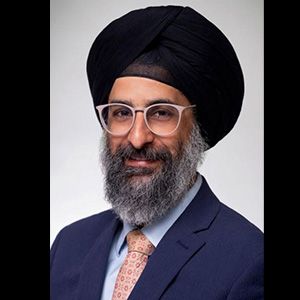
Amardeep Saluja is an Associate Professor of Medicine at the Columbia University Medical Center and is affiliated with New York-Presbyterian / Columbia University Irving Medical Center. He received his M.D. with honors from Columbia University College of Physicians & Surgeons in 2001. Dr. Saluja has expertise in Arrhythmia, Atrial Fibrillation, Cardiac Arrhythmia, Diagnostic Electrophysiology Study, Electrophysiology, and Electrophysiology-Arrhythmias.
